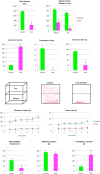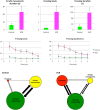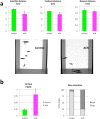Acrylamide acute neurotoxicity in adult zebrafish
- PMID: 29784925
- PMCID: PMC5962567
- DOI: 10.1038/s41598-018-26343-2
Acrylamide acute neurotoxicity in adult zebrafish
Abstract
Acute exposure to acrylamide (ACR), a type-2 alkene, may lead to a ataxia, skeletal muscles weakness and numbness of the extremities in human and laboratory animals. In the present manuscript, ACR acute neurotoxicity has been characterized in adult zebrafish, a vertebrate model increasingly used in human neuropharmacology and toxicology research. At behavioral level, ACR-treated animals exhibited "depression-like" phenotype comorbid with anxiety behavior. At transcriptional level, ACR induced down-regulation of regeneration-associated genes and up-regulation of oligodendrocytes and reactive astrocytes markers, altering also the expression of genes involved in the presynaptic vesicle cycling. ACR induced also significant changes in zebrafish brain proteome and formed adducts with selected cysteine residues of specific proteins, some of them essential for the presynaptic function. Finally, the metabolomics analysis shows a depletion in the monoamine neurotransmitters, consistent with the comorbid depression and anxiety disorder, in the brain of the exposed fish.
Conflict of interest statement
The authors declare no competing interests.
Figures







References
-
- Fujita A, et al. Clinical observations on acrylamide poisoning. Nippon Iji Shimpo. 1960;1869:37–40.
Publication types
MeSH terms
Substances
LinkOut - more resources
Full Text Sources
Other Literature Sources
Molecular Biology Databases

